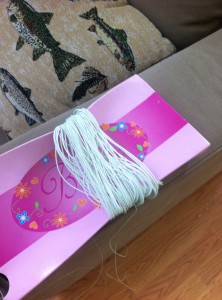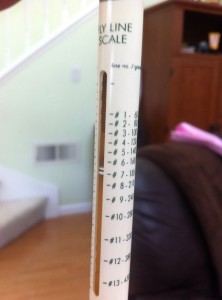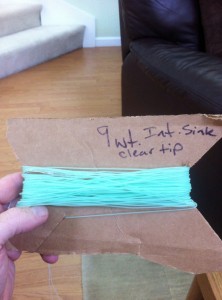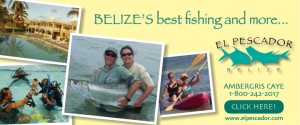Simon Gawesworth works at Rio and is primarily known for his spey casting and as a chaser of steelhead. Turns out that steelhead are just one of his passions along with another elusive, silver powerhouse of the fish world… the bonefish. Rio makes one of the lines you might find yourself sporting if you head out bonefishing and they do some product testing in places like the Bahamas and Mexico. If you want to watch Simon do a bit of casting… you can see him do just that here (YouTube).
You are known for throwing the long stick for steelies, do you like bonefish for the similarities of the differences from steelhead?
That assumes I analyze my reasons for fishing. I don’t know exactly why the steelhead or the trout or the bonefish give me the passion… I’ve never even gone fishing for tarpon, for example, why not? I know it is a passion that bites people. There are differences, vast differences, complete opposites, climatic conditions, scenery, target fishing as opposed to blind fishing. There are differences there. But there are similarities, very good fighting fish, the steelhead and bonefish. Silver.
I don’t know what it is, but those three species are my soul. They make me tick.

Where do bonefish rank in terms of what you are fishing for?
I can’t distinguish. Bonefish, trout and steelhead are all my absolute passions, those are the three I target as much as I possibly can and everything else is pretty much a significant step down. They’ve all got different appeals.
Are you someone that goes to the same places year after year or are you someone who is out to explore new and exotic places?
Kind of both. With bonefish I probably haven’t been to the same destination for the past five trips but before that I always went the same week to the Florida Keys, to the same area and same guides. My kids got to the age where they went to school and I couldn’t travel and so now i have to fluctuate my time off. The last trip I had was to the Bahamas, the Bahamas for the first time, Mexico before that, Florida Keys before that, then Christmas Island, kind of a bit of variation like that. Never done the Seychelles, haven’t done Cuba.
How long have you been with Rio?
The easiest answer is that I’ve been at Rio and living here in Idaho for ten year.
Rio makes a lot of lines. What makes a great bonefishing line and how can those of us who are non-epic casters appreciate the difference?
That’s the dilemma when you sit down and start to draw up a line design. There is no line that is going to suit everybody or every condition or every location. There are too many variables. Where fly line development has gone is that now people are aware that they may need two to three different lines for different conditions. That makes it a tough one to answer.
I’ll give you an answer that might help. When I went to the Bahamas last December the lines I used the most were our bonefish taper and our redfish taper. The difference was that the redfish taper is a very short head, just over 30 foot in length, that’s the whole head length. Front loaded, easy to cast. The bonefish line is a long head, 40 foot, easier distance, very good for picking up your cast. I used the bonefish line on the sunny days because you can see fish at range, 40, 45, 50 feet, and you can cast to the target with those longer head lines. But, since I went in December, most of the days were cloudy, overcast and gray and we couldn’t see the fish until they were 20 feet, 25, and the bonefish lines just didn’t load up at that short range as well as the redfish line does.
You need to be aware of where you are going, what the conditions are going to be, if you are wading, you are going to see fish closer in and you want a line that will load in closer, while when you are on the bow of a boat, with some height and see the fish from greater distance, you may want a different line.
You’ll mostly want a tropical coated line, but, again, in December, I used our colder water condition line because it wasn’t so hot and if it is cool, your tropical lines will have too much memory.
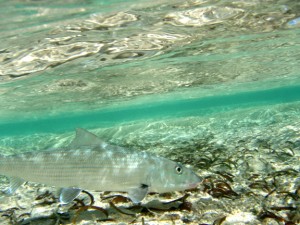
I love seeing someone out on a trout stream casting 50 feet when all the fish are 5 feet away. While someone might be able to cast 90 feet, it doesn’t mean that they should. At what range do you find yourself casting to bonefish and how does your casting skill change the game of stalking bonefish?
I would say the majority of my bonefish are going to be in that 35-40 foot range. I’ll break it down in terms of wade fishing or from a boat. From a boat, 40 foot is closer to the mark. Wading, 40 foot would be a long mark. Obviously, I can throw it to 90 if I need to and if a fish is out there at distance.
I think that everybody who has the ability to throw 90 feet is going to be more accurate at 30 foot or 40 foot and have a better presentation. Distance isn’t the entire end game. It is the accuracy, it is the general presentation, it is being able to lead by 3 feet or whatever the guide of the day tells you. Distance is good to have when you need it, but accuracy and presentation are more important.
One curve in this… accuracy is going to important, line speed to penetrate the wind, but one thing that is really important is the ability to change direction quickly. You make a cast and the bonefish changes direction and you have a 45 degree or 90 degree angle change required. A directional change, and that’s my strength with my spey background, that skill I think is a bonus for bonefishing.
Is there a place on your wishlist?
How long a list can I have? Cuba, definitely, love to do that. I can do that, being English, I don’t have the same restrictions. Unfortunately, a lot of Americans can’t. Seychelles would be on there. I’d love to do some exploratory trips to some weird, nuclear atolls that were used in WWII, no guides, just go around and search. I’d love to do that… but… married, kids, that’s NEVER going to happen. That’s just fancy thinking. Plus, a bunch of islands in the Bahamas, I’ve only fished Andros on the one trip. I’d love to go back there and I’d like to go to Cat and I’d like to go a whole pile of places.
It would be hard if someone said “here it is, open the envelope, this is your bonefish trip, anywhere you want to go, here is your one trip.” I might be inclined to go back to Andros, actually, just because of the size of the bonefish we saw there. You see some big fish in the Keys, but we went onto one flat one day with one of the guides and he said it was a big fish flat. The tide was right. I saw 20 or 30 that were over 10 pounds swimming around, maybe 15. Monster bones. I’ve never caught one that size. So, I’d put that up there. I’d like to go to the Seychelles, I’d like to go to Belize.
Me to!
You see a lot of people over-line their rods. What makes an 8 weight rod match an 8 weight line and when should you think about over-lining?
To anyone who is a novice at saltwater fishing, that is a good suggestion, to overline. Especially if they don’t have the opportunity to really hone their casting skills. Someone who isn’t a great caster, over-lining is good. Those saltwater rods are a bit more powerful than those freshwater rods, as a result they need a little more grain weight to make them flex. So, that’s a good reason. Another would be if you are fishing short range. If you are fishing the Bahamas in December you are going to have cool, cold conditions and fishing at 10-15 feet, by all means step up a line size because you will need to to get that rod to load.
I would also check on the manufacturers of the fly lines. We do that… we automatically do that (increase line weights). Our redfish line is a half a line size heavier, so it is an 8 and a half line size heavier so that it loads up for close in fishing. Our bonefish is a little less, a quarter line size heavier. But again, we do build that into the equation. If they step up to a 9 line, they might actually be fishing a 9 and a half and that starts to get a little heavy.
If you are a good caster you don’t need to. If it is going to be a really windy day, absolutely. There is no rod that is going to be crushed by a single line weight increase and that extra weight can really help.
In Christmas Island there is a flat called Paris Flats and they are much deeper and you fish heavier flies with bigger eyes and I was wishing for a heavier line because the flies were much harder to cast.
You’d expect me, coming from a line maker, to say you need three or four lines. The reality, if you are going to go that far on a trip and spend the kind of money that these trips are, it makes no sense to come with one line. Just in case I’d have a back up for something a little different.

Fish on!
What are you throwing right now in terms of rod and reel?
Right now I’m throwing the Sage Xi3. I really do like that a pile. Before that I threw a T&T Horizon Saltwater 8 wt. That was a nice rod as well. The Xi3 is great and I compliment that with a Sage reel, a 6080, which is a really nice, tough drag reel. I’ve got a reel by a company by a company down your way, Hatch, a really sweet reel, but my go to is the 6080 from Sage.
When I think of bonefishing I think of all sorts of non-bonefishing things… the Kalik, the cracked conch. Are there any of those sorts of associations you have when you think about chasing bonefish?
The first thing, obviously, is that I’m getting out of the Hell of Winter in Idaho, somewhere in the tropics. Exotic, tropical destinations. Kalik beer, or Belikin. So, cold local beers, fresh fish, ceviche. Down in Mexico they made fresh ceviche out of snook every day and that was delicious. The smell of saltwater, the smell of the sea side.
It is funny that you ask that now. Those are my current associations where as in the past when my wife and the family would go down in November to Florida, then the associations were Margaritas and hammocks and toes in the sand and just pottering around. I’d always take a couple of days with a guide, and then in the evenings I’d fish an incoming tide somewhere. Now, with the kids in school, we can’t do these holidays. I now do different fishing holidays so these are my associations now.
Thanks Simon!




